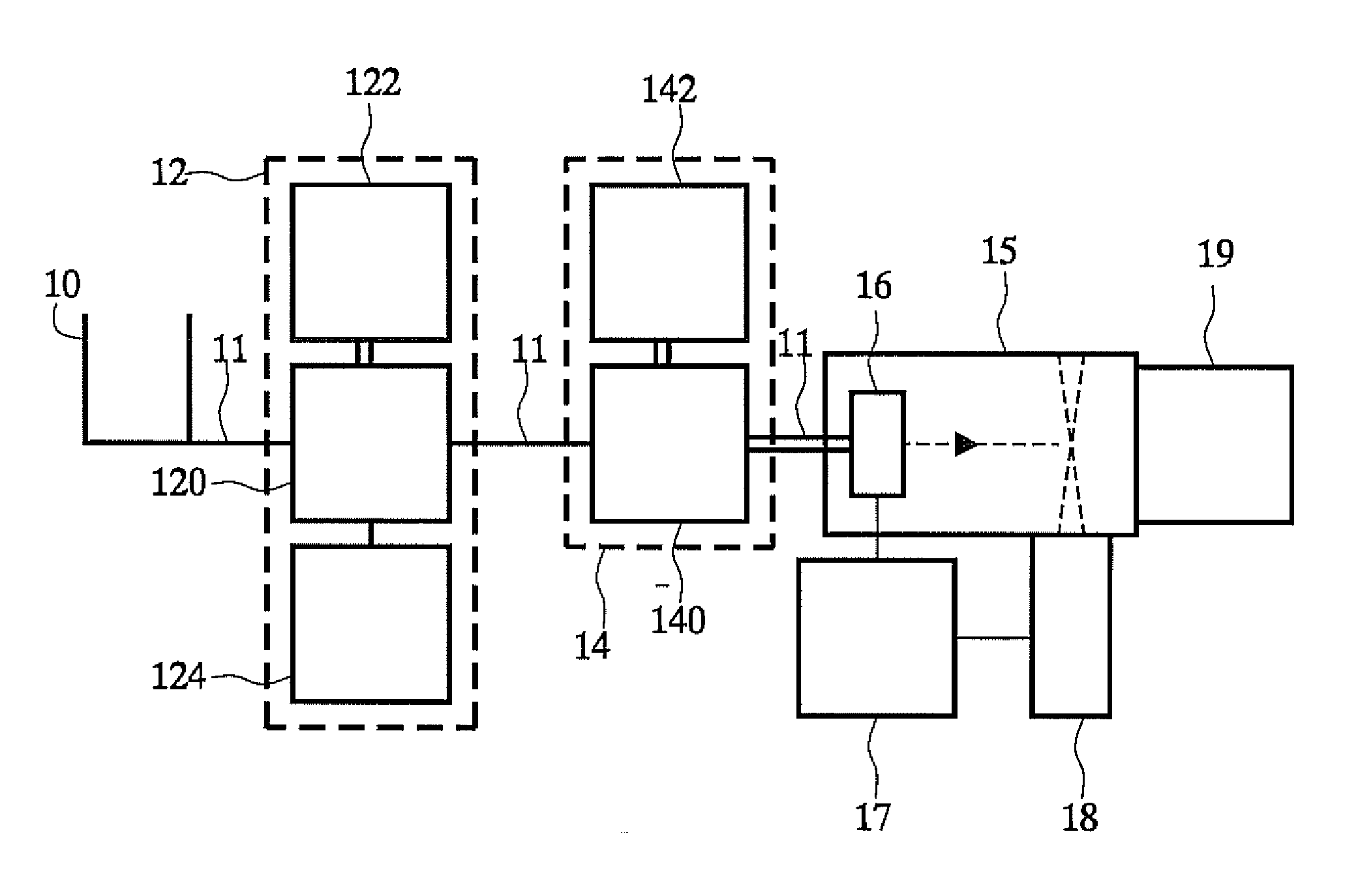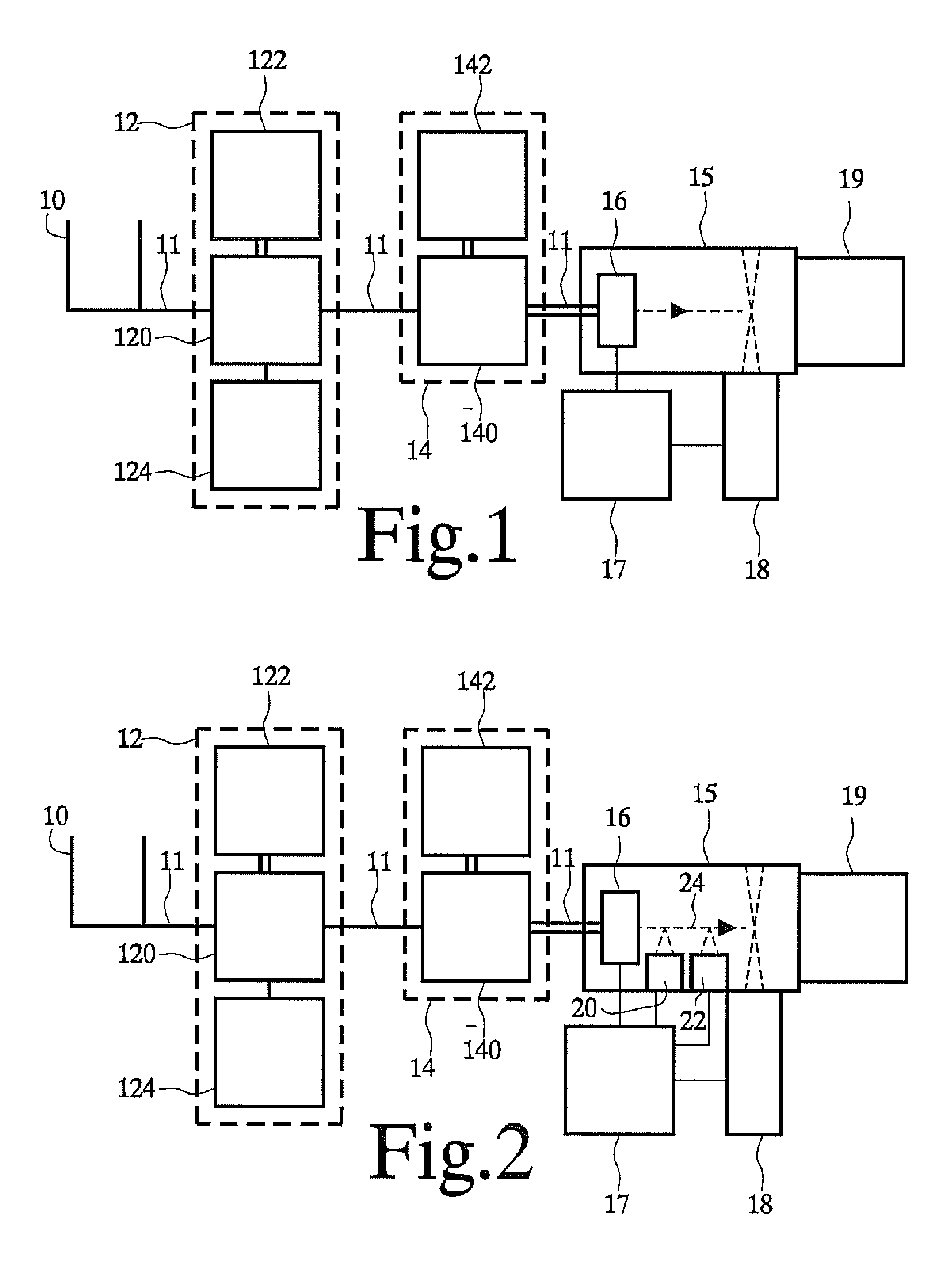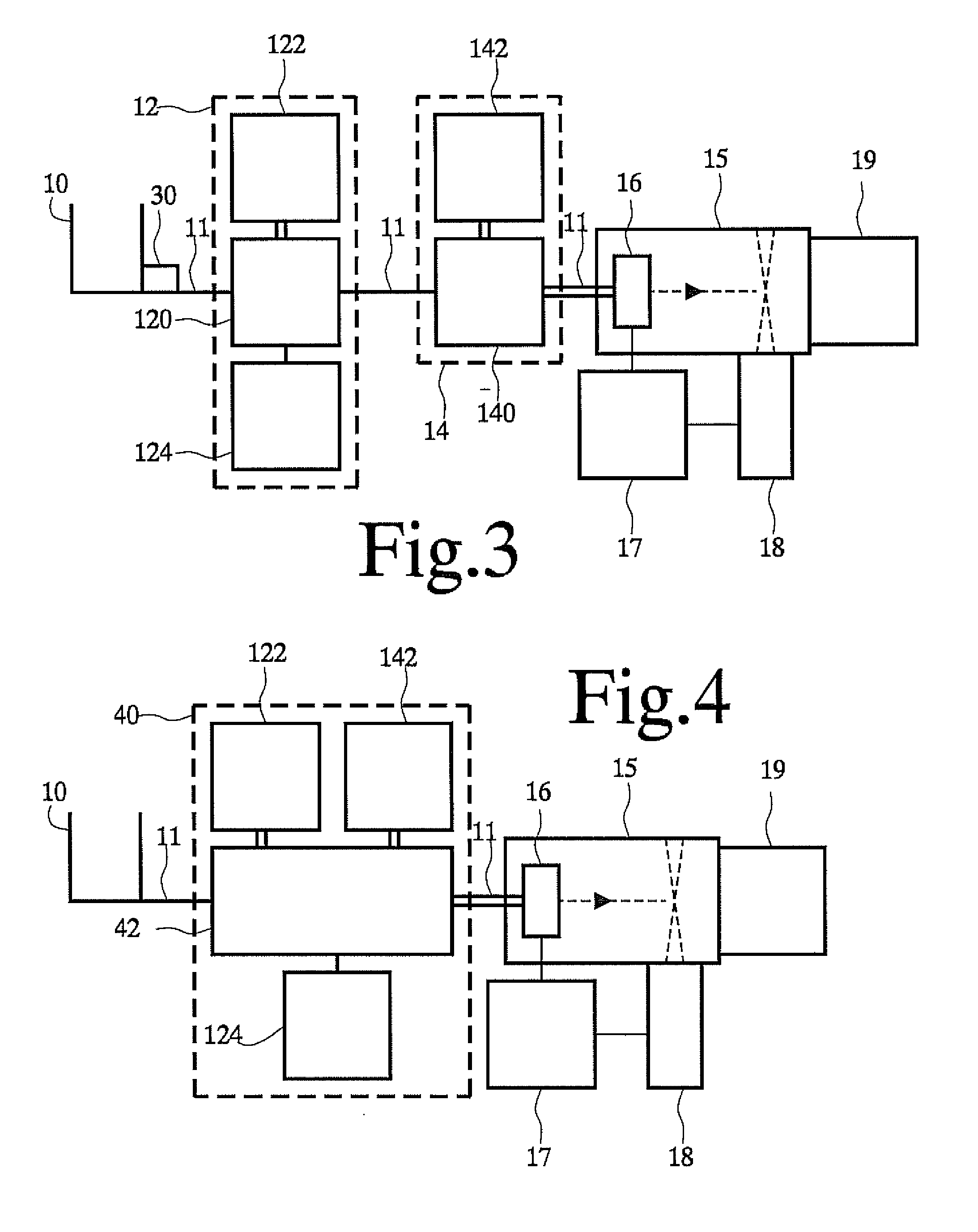Method and Apparatus for Identification of Biological Material
a biological material and identification method technology, applied in the field of identification of biological materials, can solve the problems of not being able to detect, affecting the identification of individual species, so as to reduce the probability of drops
- Summary
- Abstract
- Description
- Claims
- Application Information
AI Technical Summary
Benefits of technology
Problems solved by technology
Method used
Image
Examples
Embodiment Construction
nization is performed.
[0031]In another embodiment the apparatus comprises a control unit configured to synchronize drop formation and pulse generation from the radiation source.
BRIEF DESCRIPTION OF THE DRAWING
[0032]These and other objects and advantageous aspects will become apparent from a description of exemplary embodiments.
[0033]FIG. 1 shows an apparatus for identifying micro-organisms
[0034]FIG. 2 shows an identification apparatus with fluorescent screening
[0035]FIG. 3 shows an identification apparatus with an ultrasonic separator
[0036]FIG. 4 shows an further identification apparatus
[0037]FIGS. 4a-c show examples of liquid stream separators
[0038]FIG. 5-7 show embodiments of an identification apparatus
DETAILED DESCRIPTION OF EXEMPLARY EMBODIMENTS
[0039]FIG. 1 schematically shows an apparatus for identifying biological material. Although an application to identification of micro-organisms will be described in the context of this apparatus, it should be appreciated that the apparatu...
PUM
 Login to View More
Login to View More Abstract
Description
Claims
Application Information
 Login to View More
Login to View More - R&D
- Intellectual Property
- Life Sciences
- Materials
- Tech Scout
- Unparalleled Data Quality
- Higher Quality Content
- 60% Fewer Hallucinations
Browse by: Latest US Patents, China's latest patents, Technical Efficacy Thesaurus, Application Domain, Technology Topic, Popular Technical Reports.
© 2025 PatSnap. All rights reserved.Legal|Privacy policy|Modern Slavery Act Transparency Statement|Sitemap|About US| Contact US: help@patsnap.com



